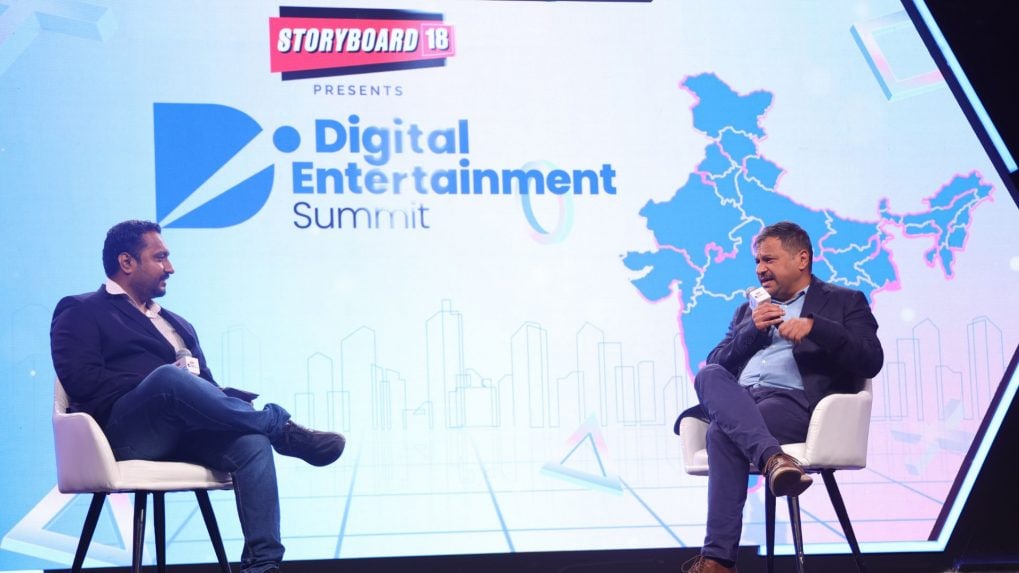Need a unified national policy for online gaming: Brijesh Singh, Principal Secretary, Maharashtra Govt at Storyboard18 DES 2025
At Storyboard18's Digital Entertainment Summit 2025, Brijesh Singh, Principal Secretary, Directorate General of Information & PR, Maharashtra, said, “There needs to be one uniform policy across all states,” pointing out how the Indian Gambling Act of the 1850s has resulted in a patchwork of state-level regulations.
ADVERTISEMENT
At Storyboard18's Digital Entertainment Summit 2025, Brijesh Singh, Principal Secretary, Directorate General of Information & PR, Maharashtra, made a strong case for harmonizing India’s fragmented legal framework around cybercrime, gambling, and online gaming.
“There needs to be one uniform policy across all states,” Singh said, highlighting how the Indian Gambling Act of the 1850s has created a patchwork of state-level regulations. “Nagaland may come up with something, Haryana may come up with something, Maharashtra may come up with something,” he added. “There has to be a harmonization.”
Singh emphasized the need for a national framework, particularly for online gaming, which he described as fundamentally different from traditional gambling. “To put sanity around all this, you need a national framework. It would be very worthwhile that some kind of a model framework is created which then all states follow,” he said. “Rather than having this patchwork of governance, it should have one at least unified law across all country.”
This demand for uniformity was also tied to investigative challenges. “Policing is a state subject,” Singh noted. “Investigation, collection of evidence, arrests—all of that falls under state jurisdiction.” But capability varies widely across states like Chhattisgarh, Bihar, Odisha, Maharashtra, and Karnataka, making enforcement uneven and inefficient.
He further argued that the internet erases jurisdictional boundaries, unlike traditional land-based industries. “It’s illogical to apply a land-based legal model to the internet. There are no borders on the internet.” Singh called for immediate action: “We need harmonization and we need it now.”
Singh shared how Maharashtra became an early mover in cyber policing. “Maharashtra was one of the first states to establish 47 cyber labs in one go. In fact, I was very lucky to be the first cyber chief in 2015.”
With an allocation of ₹1,000 crore from the then Chief Minister, “we could go around the world, see what is the state of the art and create best labs in Maharashtra.” He added that this helped train lakhs of personnel and build public awareness.
Feedback loops were also created with banks and regulators: “If we saw that there was a feedback that KYC is a weakness which is leading to crimes, then we could give feedback to the regulators... and come up with right policies and right frameworks.”
The official praised central coordination tools like I4C and 1930. “There is a number called 1930. Everybody should remember this number because as soon as somebody is subjected to crime, they should call up this number because it stops the flight of money.”
Read More:Retrospective GST and offshore gambling are twin threats for gaming: EY’s Ashish Pherwani
In most cybercrime cases, money gets distributed across accounts in real time. “1930 has the authority to stop this flight of money. Because generally in crime we say: follow the money.”
He also highlighted cybercrime.gov.in, where victims can lodge anonymous complaints. “A lot has been done... in raising the capabilities and the capacity and the skills of police forces to investigate cybercrimes.”
On partnerships, the official cited the Maharashtra Cyber Digital Crime Unit, later rebranded as the Intellectual Property Crime Unit. “It was a unique partnership in which we told the industry: you give us the infrastructure, manpower, expertise—we’ll give you the law enforcement teeth.”
This collaboration led to blocking millions of piracy hits per month. “Only 14% of piracy traffic was happening in India and 16% overseas,” he said, rebutting long-standing criticism of India’s IP enforcement.
He called for similar public-private models for threat intelligence sharing: “It can be about anything—crypto flows, malware, IPs, illegal transactions.”
Read More:Banning games is not the solution: Jayesh Ranjan, Govt of Telangana at Storyboard18 DES 2025


